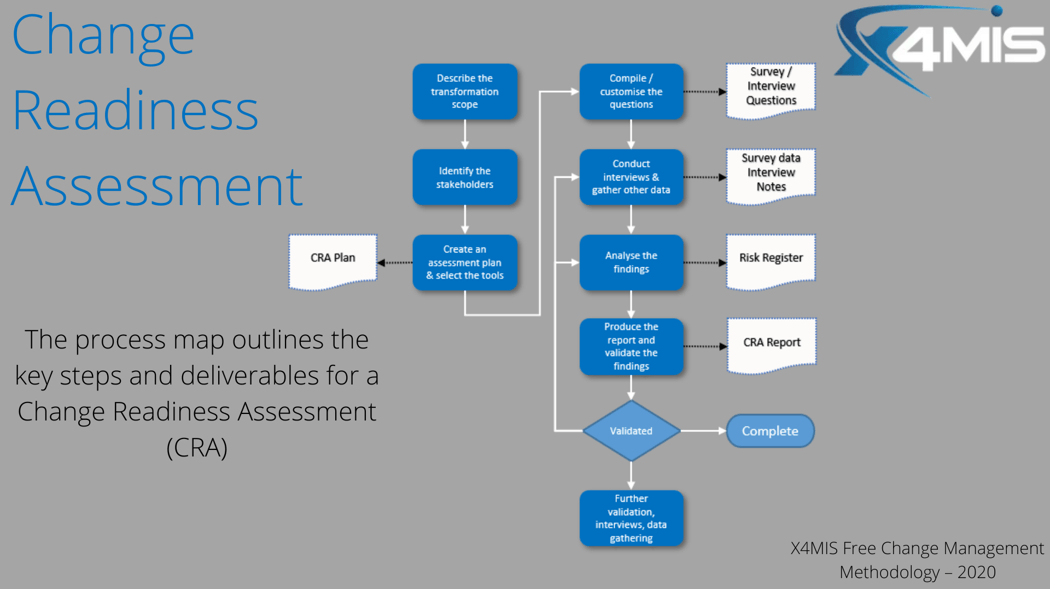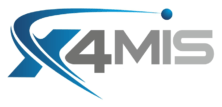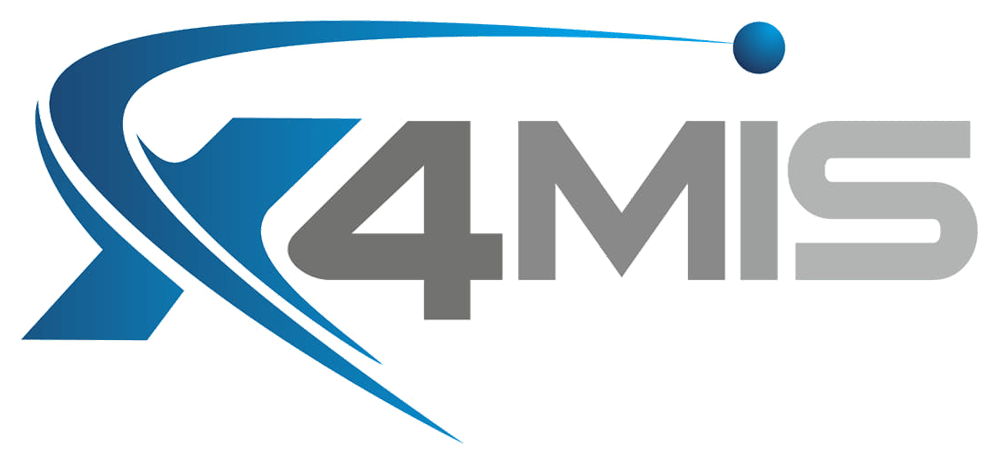Change Readiness Assessment
What is a Change Readiness Assessment?
The Change Readiness Assessment (CRA) provides a process organisations can follow to confirm and reinforce their change goals. The CRA examines key factors, including awareness, receptivity, and capability. It validates what must be done to prepare for and improve the success of the business transformation. It's also an excellent way for the Change Manager to better understand the business and everyone in the organisation.
A substantial change with significant effects will require a more thorough assessment of the business' preparedness for change and more preparation on the part of the groups than a smaller organisations change with more modest effects.
Overview
Several factors are reviewed to understand how prepared the impacted organisational groups are for the upcoming Change Project. The level of evaluation is based on the size and impact of the change. The full assessment is outlined below. However, the minimum steps the business groups are assessed for include the following:
- Level of their understanding of the change.
- Their level of support for the change.
- Knowledge and skill level with the new process.
- Capacity for the tasks required to implement the change effectively.
Prerequisites
The following can be completed before or in conjunction with the CRA:
- Complete a Blast Radius or Change Impact Assessment
- Complete a High-level Stakeholder Identification.
- Download the Interview Questions / Question Guide
Describe and share the transformation scope
To correctly gauge your organisation's capacity to adapt and adopt the change, everyone involved must comprehend the change. Ensure you have defined all the components, parties involved, and systems the change will affect. Consider the size of the change and estimate the timeframe needed to accomplish it. Communicate the transformation scope with the stakeholders.
It is recommended that a minimum of two surveys/questionnaires for readiness be conducted. The first at the beginning of the programme to establish a base-line. The second is the one that gauges how successful the organisation and change management have been in readying the impacted stakeholders for the change. It is the second assessment that you will report the results of.
Identify the Stakeholders
Identify the stakeholder to be interviewed and people who can have a significant effect, and complete a stakeholder analysis. These include managers, experts, team leaders, and sometimes vendors, customers or suppliers outside the organisation. The analysis will help to understand their comprehension of the change, the adaptability and desire of their team to change, and the difficulties they foresee. By identifying stakeholders early on, you can find key influencers or resistors that may come into play later.
1. Create an Assessment Plan
Readiness assessments can be conducted using a variety of standard pre-made tools and processes. You can select one or more of those available from the X4MIS methodology or others available publicly. Modify them to fit your particular circumstance and better meet your company's demands better. Document your planned approach based on the tools you will use and your understanding of the organisation's current resources, the environment, and the attitudes of all stakeholders and impacted personnel for the tools you choose.
2. Compile the Questions
Compile the questions you will use to collect data.
Risk - Asking staff questions can cause anxiety and confusion, which can be problematic if your team and leadership are not prepared to address the concerns that inevitably surface when staff members learn that change is imminent.
Mitigations:
- Ensure the planned change is well communicated, especially with people identified to be interviewed
- Ensure communications are shared well in advance
- Ensure clear communication channels to clarify or respond to the interviews
- Enable confidentiality

3. Conduct interviews and gather data
The more interviews you do, the larger the report's accuracy will be, as the sample size is integral to gaining a fair representation of the company's employees. However, the evaluation process is not the main focus of the Change Management Programme; it's a valuable planning tool. Assessments should only take a short time to assist your team in making wise planning decisions.
The interviewing process is not a specific Change Management competency; options to complete the interviews include:
- Outside consultants to collect data using traditional interview techniques
- Surveys
- Focus groups can be utilised to gather data from a more significant number of personnel.
- Internal managers overseeing Change Management activities interview groups affected by their change. These Managers frequently already possess the necessary knowledge of the change's features and organisational traits.
- Ensure a general sample and fair representation of impacted stakeholders being interviewed.
4. Analyse the Findings
Validating the findings of your interviews can be the key to identifying any threats that may arise. The point of interviewing employees is to understand where stakeholders currently stand around the company's views and culture, their attitudes and how they might react to the change.
Review the outcomes of the surveys, interviews you conducted. Document the responses, and look for any trends and/or patterns that arise, capturing the issues and opportunities identified by the stakeholders. The data collected from all employees will prove vital to further change progress; this aids the Change Readiness Assessment in determining risks.
Use a Risk Register to capture potential risks
5. Produce the report
The Change Readiness Assessment Report is compiled from all the data and knowledge you have gathered; it should define the organisation's character, culture and direction as a result of the planned Change Initiative.
It should confirm the organisation's readiness to adopt the proposed change and define how it can most effectively be delivered.
Validation and Completion:
Complete the Change Readiness Assessment by validating the report. Share the Change Readiness Assessment and the data gathered to the sponsor, senior stakeholders and Change Management Team for initial review and validation. The sponsor will confirm with certainty if the Change Readiness Assessment provides sufficient clarity on the impact of change and ensure whether to proceed, refocus, or cancel the initiative.
If further validation is required, repeat the process steps “Conduct Interviews and Gather Data" and "Analyse Findings."
Compose the Change
Browse by Categories

Free On-Line Change Management Methodology that enables individuals and organisations, especially those previously without access to effective change management programmes, to deliver more effective community and country programmes which improve prosperity and save lives.
QUICKLINKS
TRAINING LINKS
LATEST POSTS




